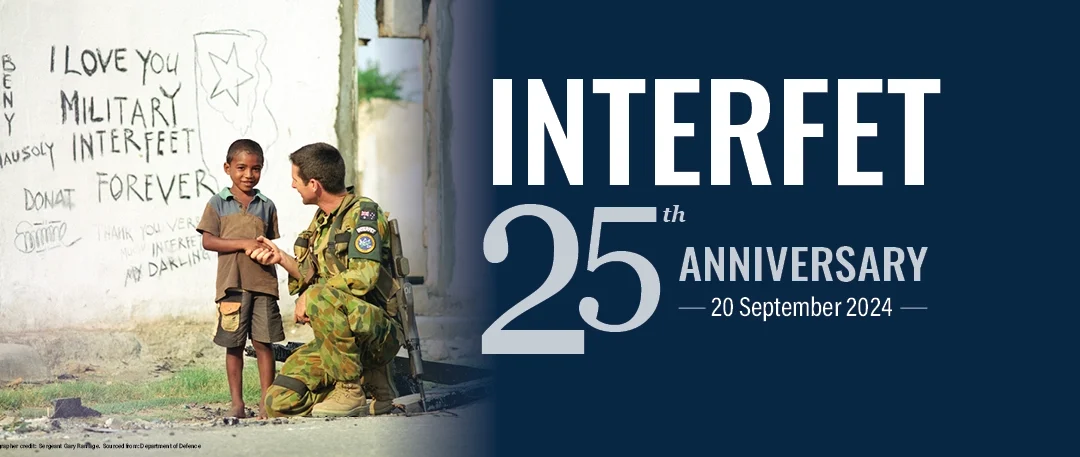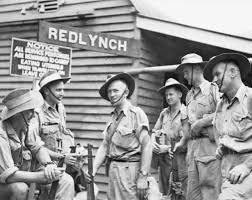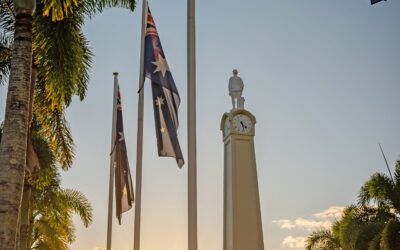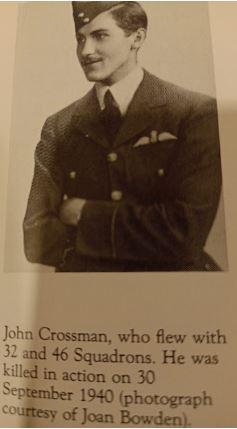Australia has had peacekeepers in the field with the United Nations since 1947. In Indonesia in 1947, Australians were part of the very first group of UN military observers anywhere in the world, and were, in fact, the first into the field.
In the early years, Australia’s peacekeepers were generally unarmed military observers, promoting peace indirectly by ensuring that neither side in a conflict could violate a ceasefire or commit atrocities without the United Nations and the world community knowing about it. Military observers with a peacekeeping operation are impartial and can use their military training to assess a situation accurately.
In Indonesia, information from UN military observers ultimately helped the Indonesian republicans win their independence from the Dutch. In Korea in 1950, the UN’s judgement that North Korea had invaded the south was based, in part, on a report by Australian military observers serving with the UN Commission on Korea.
Observer missions help create stability, but do not necessarily help end the conflicts which they are observing.
Peacekeeping has not only been the preserve of the Australian Defence Force. Since 1964, Australian police have served in Cyprus. More recently, police officers from Australia have also served in places as widely separated as Cambodia, Haiti, Mozambique, Bougainville and Timor.
Since the 1970s, Australian contributions to peacekeeping operations have increased in size and scope. RAAF helicopters operated in the Sinai in the 1970s and 1980s, as Egypt and Israel ended three decades of hostilities. At the end of the 1970s, an Australian infantry force of 150 soldiers took part in a British Commonwealth operation as Zimbabwe achieved independence. In 1989, a larger contingent, composed largely of engineers, assisted the United Nations Transition Assistance Group (UNTAG) in Namibia.
With the end of the Cold War, the 1990s proved to be the busiest decade in the history of multinational peacekeeping. For the first time, RAN ships took part in a peacekeeping operation, enforcing UN-imposed sanctions against Iraq both before and after the Gulf War.
For a period in 1993, Australia had over 2,000 peacekeepers in the field, with large contingents in Cambodia and Somalia. In Cambodia, Australia had taken a leading diplomatic role in the search for a settlement to factional strife in a country still suffering the effects of the genocidal Pol Pot regime of the 1970s. The Australian contribution to the resulting UN operation included the force commander and the operation’s communications component. In Somalia, where the international effort resulted largely in failure, a battalion-level Australian contingent was nevertheless successful in allowing the delivery of humanitarian aid in the Baidoa area.
A year later, Australians were in Rwanda, another country to fall victim to genocidal civil violence. This time, the Australian contingent centred on medical staff who were able to treat many of the local people, in addition to members of the UN force.
After this there was a lull in Australian peacekeeping, though long-running operations continued in the Middle East and Cyprus and Australians were still involved with Iraq, inspecting weapons-manufacturing facilities and policing sanctions.
Since 1997, however, Australians have also served on Bougainville, where a settlement at last appears possible in the long-running conflict between the Papua New Guinea government and the separatist Bougainville Revolutionary Army.
Then in 1999, Australia led a peace enforcement operation which dwarfed all its previous peacekeeping efforts, as East Timor achieved independence from Indonesia.
The Portuguese colony of East Timor was invaded by Indonesia in 1975. After almost a quarter-century of bloodshed in the territory, a new Indonesian government under President Habibie agreed to allow the East Timorese to vote on their future. A UN operation – the United Nations Mission in East Timor (UNAMET) – was established to organize and conduct the vote, which was held at the end of August 1999 and resulted in an overwhelming vote in favour of independence.
Tragically, once the result had been announced, pro-Indonesian militias, sometimes with the support of elements of the Indonesian security forces, launched a campaign of violence, looting and arson throughout the entire territory. Many East Timorese were killed, and as many as 500,000 were displaced from their homes, about half leaving the territory, in some cases under threat of violence.
Eventually, as the violence remained uncontrolled, Indonesia agreed to the deployment of a multinational peacekeeping force. Australia, which had contributed police and military liaison officers to UNAMET, organized and led the International Force East Timor (Interfet), a non-UN force operating in accordance with UN resolutions. Interfet, with the role of restoring peace and security, protecting and supporting UNAMET, and facilitating humanitarian assistance operations, began arriving on 12 September 1999. Australia contributed over 5,500 personnel and the force commander, Major General Peter Cosgrove.
With the withdrawal of the Indonesian armed forces, police and administrative officials from East Timor, UNAMET re-established its headquarters in Dili on 28 September. On 19 October 1999, Indonesia formally recognised the result of the referendum. Australia has continued to support the UN peacekeeping operation with between 1,500 and 2,000 personnel, as well as landing craft and Blackhawk helicopters. Australia remains the largest contributor of personnel to the peacekeeping mission.
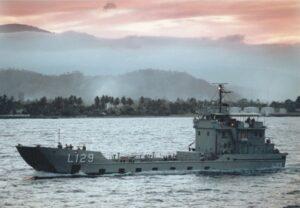
HMAS Tarakan (L129) – The amphibious capabilities of Balikpapan class LCH’s proved vital in support of operation ASTUTE, East Timor
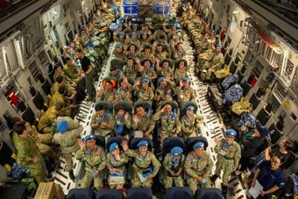
Peacekeepers from the Vietnam People’s Army Level Two Field Hospital contingent, on board a Royal Australian Air Force C-17A Globemaster prior to departing on a United Nations Mission out of Ho Chi Minh City, Vietnam, to South Sudan in Northern Africa. (Photo by SGT Nicci Freeman/Australian Government Department of Defence)
Peacekeeper Peacemaker Commemorative Service
The Cairns RSL Sub Branch Peacekeeper Peacemaker Commemorative Service will be held at the Peacekeeper Peacemaker plaque on Friday, 20 September at 10am.
Please join us as we honour the service and sacrifice of all those who have served in these vital roles.
This year marks the 25th anniversary of Australian service in Timor-Leste, a mission that spanned from 1999 to 2013 and included contributions from the Australian Defence Force, the Australian Federal Police, and civilians.
Sources:
Australian War Memorial https://www.awm.gov.au/research/guide/peacekeeping
Royal Australian Navy https://seapower.navy.gov.au/history/feature-histories/operation-astute-ran-east-timor
Military Leak https://militaryleak.com/2023/07/11/royal-australian-air-force-c-17a-supports-vietnam-in-peacekeeping-mission-to-south-sudan/
